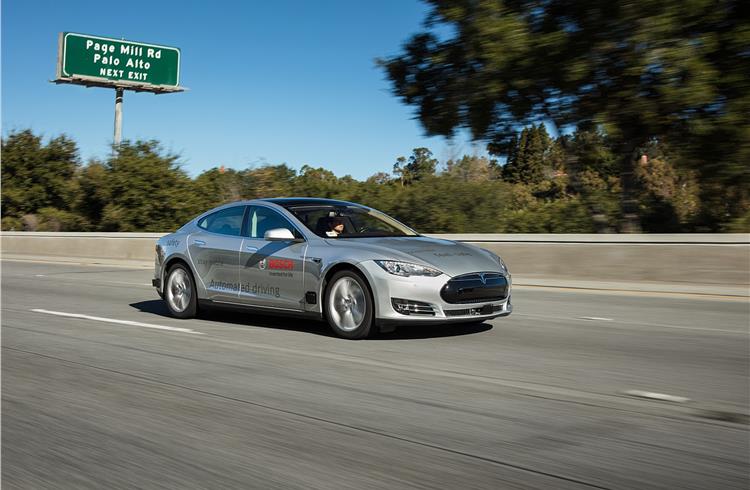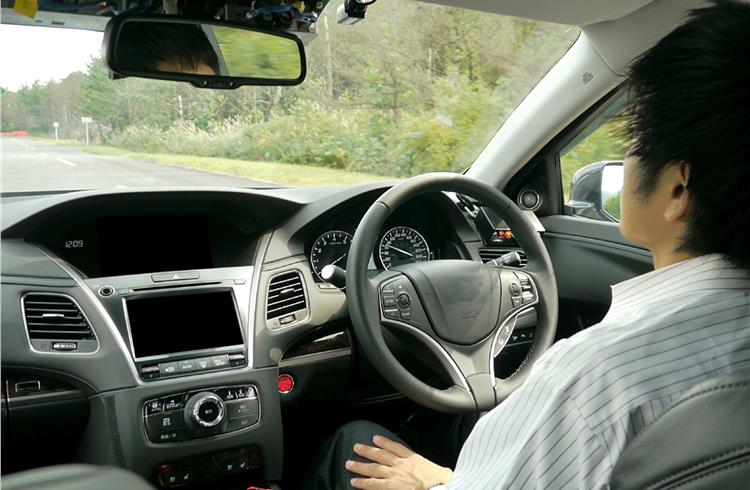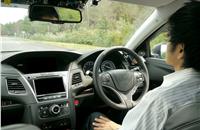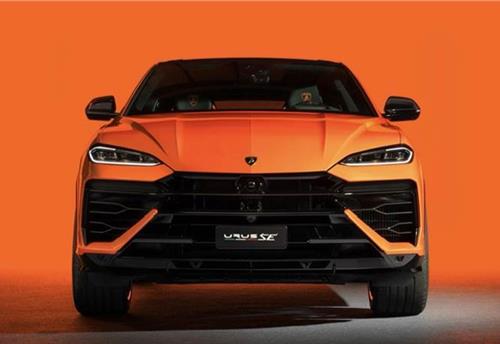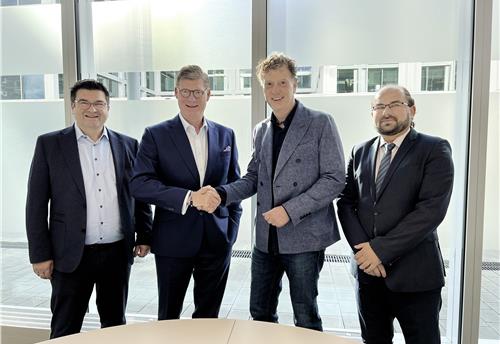Bosch conducts automated driving tests on roads in Japan
Japan is Bosch’s third engineering location for automated driving, after Germany and the US.
Bosch is taking the development of automated driving one step further. As well as in Germany and the US, the supplier of technology and services is now testing the technology of the future in Japan. Bosch’s initial goal is the development of the highway pilot, which will allow cars to drive autonomously on freeways and freeway-like roads starting in 2020. “Because people there drive on the left, and because of the complex traffic conditions, Japan provides us with valuable insights for development,” says Dr. Dirk Hoheisel, a member of the board of management of Robert Bosch GmbH.
Worldwide, nearly 2,500 Bosch engineers are working to develop driver assistance systems and automated driving further. Like the engineers in Germany and the US, the team in Japan is already conducting tests with automated test vehicles on public roads. The test drives are being conducted on Tohoku expressway (Tochigi prefecture) and the Ken-O expressway; officially known as the Metropolitan Inter-City expressway (Kanagawa prefecture), as well as on the two Bosch proving grounds in Shiobara and Memanbetsu.
Close collaboration between teams in Germany, the US, and Japan
With their development activities getting underway, the new team in Japan is benefiting greatly from the findings of their colleagues in Germany and the US, who have been working on automated driving since 2011.
Since early 2013, the company has been operating test vehicles on the A81 freeway in Germany and Interstate 280 in the United States. “Our engineers have now completed more than 10,000 kilometres of test drives without an accident,” Hoheisel says. The Bosch test vehicles guide themselves through traffic – accelerating, braking, and overtaking as necessary. They also decide for themselves, and depending on the traffic situation, when to activate the turn signal and change lanes.
The basis for all this is sensors that provide a detailed picture of the vehicle’s surroundings. In addition, Bosch’s partner TomTom provides highly accurate map data. A computer uses all this information to analyze and predict the behavior of other road users, and on that basis makes decisions about the automated vehicles’ driving strategy.
Legal framework needed for automated driving
If automated driving is to become reality in production vehicles, and not just in prototypes, the legal conditions for this have to be created. This matter is now on the political agenda in the U.S., Japan, and Germany. There are signs of impending change in the Vienna Convention on Road Traffic, which Germany has also ratified.
Also read: Bosch’s active gas pedal alerts drivers and lowers fuel consumption
On April 23, 2016, amendments to the convention will come into force. The member states will then have to transfer these amendments into national law. They allow automated driving so long as the driver is able to override or disable it. In the sphere of vehicle registration law, an informal working group of UNECE (the United Nations Economic Commission for Europe) has also begun looking at Regulation R.79, which only allows automatic intervention in steering up to a limit of 10 kph. The validation of automated driving functions is another challenge. Using current methods, a highway pilot has to complete several million kilometres’ worth of testing before it can be released for production. Bosch is now working on entirely new approaches.
Broad in-house expertise an advantage
In the development of automated driving, Bosch benefits from having all the necessary technologies at its fingertips. These include not just the powertrain, brakes, and steering, but also sensors, navigation systems, and connectivity solutions inside and outside the car. Hoheisel says, “Bosch develops everything, from the individual components to the entire system.” For example, Bosch sensors are in great demand: Last year, the company sold more than 50 million surround sensors for driver assistance systems for the first time. The number of radar and video sensors sold doubled in 2014 – and will do so again in 2015. When it comes to the radar sensors used in systems such as ACC adaptive cruise control, Bosch leads the market worldwide. Its ten-millionth radar sensor (77 GHz) is expected to roll off the line in 2016. In 2015, the 50-millionth Servolectric electric power steering system also rolled off the line at Bosch in Schwäbisch Gmünd, Germany.
Increasing automation will cut accidents in Germany by up to one-third
For Bosch, automated driving is about making road traffic safer. The UN estimates that 1.25 million people worldwide are killed in road accidents each year. Ninety percent of these accidents are caused by human error. “In critical traffic situations, the right support can save lives,” Hoheisel says. Bosch accident research predicts that increasing automation can lower accident rates even further – by up to a third in Germany alone. And automated driving makes road traffic not only safer, but also more efficient. US studies conclude that applying predictive driving strategies when on the freeway allow fuel savings of up to 39 percent.
Fully automated parking will be ready before fully automated driving
Even before it automates driving, Bosch is automating parking. Bosch’s automatic park assist is already in production. By smartphone remote control, the system autonomously maneuvers cars into parking spaces. “For us, automated parking begins in the vehicle – but it goes much further than that,” Hoheisel says. Bosch active parking management, for instance, makes it easier to find a parking space. Sensors installed in the pavement indicate whether or not a space is occupied. They then pass on this information – to a real-time map that can be accessed on the internet, for example. This allows drivers to pick out an available space and navigate to it.
In conjunction with Daimler, Bosch aims to revolutionise parking. Rather than having customers park and look for their cars, the vehicle drives it-self to a free parking space – and then returns on command to the drop-off point. To this end, the supplier is developing the necessary infrastructure for parking structures, including occupancy sensors, cameras, and communications technology.
RELATED ARTICLES
Lamborghini unveils Urus SE ahead of Auto China 2024
Electric-only range of 60km helps reduce emissions by 80%.
ZF to display next-gen e-axle for low-floor city buses at Busworld Turkiye 2024
The AxTrax 2 LF is available with a continuous output of up to 360 kW and a peak torque of up to 37,300 Nm.
Daimler Buses and BMZ Poland to develop next-gen NMC4 electric bus batteries
The new battery generation NMC4 – succeeding the current NMC3 technology – will combine high energy density, resulting i...





 By Autocar Pro News Desk
By Autocar Pro News Desk
 26 Jan 2016
26 Jan 2016
 3295 Views
3295 Views





